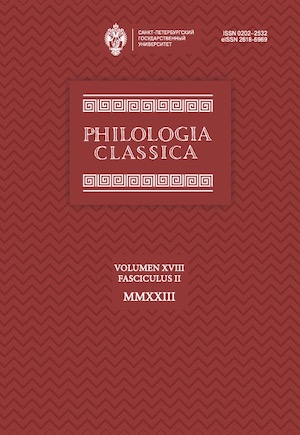The Correggio Code: In Search of the Nepenthes Lady
DOI:
https://doi.org/10.21638/spbu20.2023.211Аннотация
«Портрет дамы», атрибуируемый Корреджо (ГЭ, инв. № 5555), был, по всей видимости, подписан латинским псевдонимом Antonius Laetus: надпись на стволе лавра слева от сидящей наблюдал и пытался истолковать в 1909 г. Э.-Ф. Липгарт. Сегодня подпись не видна, однако ее присутствие подтверждается реставрационным протоколом (1974–1976 гг.), равно как и анализом художественных источников. Последний упраздняет сомнения в подлинности, заодно определяя время создания картины: пересечения с подписанной тем же псевдонимом «Альбинейской Мадонной», увлеченность Корреджо сюжетами гомеровского эпоса, причем не самыми известными, запечатленными в фресках аббатства Сан-Паоло, доказывают, что дама с кратером Елены в руке, на котором выведена по-гречески цитата из «Одиссеи», создана автором «Похищения Ганимеда», «Воспитания Амура», «Соблазнения Ио» и т. д., вероятнее всего, зимой 1518–1519 гг. Оспаривать принятое большинством отождествление модели с Джиневрой Рангони, видимо, не следует. Идею, высказанную Риккардо Финци более полувека назад, можно, напротив, подкрепить новыми аргументами: не только скапулярий и узелок францисканки, но и лавр, плющ, мирт, и общее выражение вдовы-невесты, и полная чаша прелестного остроумия как лекарство от горечи утрат, и отсылка к Елене Троянской — все это идеально соответствует жизненным обстоятельствам Джиневры. Вопреки авторитетному мнению Клаудио Францони, надпись на чаше не сводится к одному слову, но кроме νηπενθές включает ἄχολο[ν], поясняющее необычный эпитет, и [ἐπίληθον ἁπά]ντων, маркирующее конец стиха Od. 4, 221. Корреджо воспринял творческим воображением сцену пира во дворце Менелая, и, чтобы понять замысел художника, зрителю стоит обратиться к ней. Центральный персонаж сцены — Елена — выступает героиней двух рассказанных под занавес историй. В ее собственной она сочувствует ахейцам, тяготится жизнью в Трое и грустит о покинутом муже, в рассказе же Менелая старается, наоборот, погубить воинов, засевших в чреве деревянного коня. Необычные детали второго рассказа вызвали подозрение; скорее всего, он перенесен из поэмы о гибели Трои. В восприятии живописца XVI века текст был, разумеется, монолитным, созданным первым из поэтов, и противоречивость Елены требовала осмысления. Вдохновленный своим Гомером, Корреджо создал этически амбивалентный женский образ, правдивый в своей двойственности.
Ключевые слова:
Корреджо, Портрет дамы, Гомер, живопись Ренессанса, греческие пинакограммы
Скачивания
Библиографические ссылки
Krasnobaeva M. D. The Paper Museum of N. B. Jusupov, in: S. J. Karp (ed.) The Age of Enlightment — Le Siècle de Lumière II. Moscow, Nauka Publ., 2009b, 43–71 (in Russian).
Загрузки
Опубликован
Как цитировать
Выпуск
Раздел
Лицензия
Статьи журнала «Philologia Classica» находятся в открытом доступе и распространяются в соответствии с условиями Лицензионного Договора с Санкт-Петербургским государственным университетом, который бесплатно предоставляет авторам неограниченное распространение и самостоятельное архивирование.






